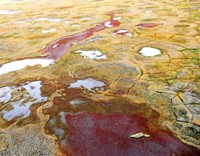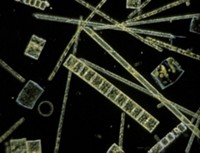Advertisement
Grab your lab coat. Let's get started
Welcome!
Welcome!
Create an account below to get 6 C&EN articles per month, receive newsletters and more - all free.
It seems this is your first time logging in online. Please enter the following information to continue.
As an ACS member you automatically get access to this site. All we need is few more details to create your reading experience.
Not you? Sign in with a different account.
Not you? Sign in with a different account.
ERROR 1
ERROR 1
ERROR 2
ERROR 2
ERROR 2
ERROR 2
ERROR 2
Password and Confirm password must match.
If you have an ACS member number, please enter it here so we can link this account to your membership. (optional)
ERROR 2
ACS values your privacy. By submitting your information, you are gaining access to C&EN and subscribing to our weekly newsletter. We use the information you provide to make your reading experience better, and we will never sell your data to third party members.
Environment
HCl's Overlooked Environmental Effects
Air Pollution: Hydochloric acid released from coal-burning power plants may have had larger effects on ecosystems than previously thought
by Naomi Lubick
February 3, 2011

For decades, emissions from coal-burning power plants have acidified water and soil, and scientists fingered sulfate as the main culprit. Emissions regulations in the U.K. have helped wetlands and nearby grasslands and forests gradually recover from acidification. Now researchers report that sulfate had an accomplice in the acidification of these environments: hydrochloric acid (Environ. Sci. Technol., DOI: 10.1021/es103574u).
Scientists had discounted HCl as a possible source of acidification in distant ecosystems because they thought it couldn't travel far from its power-plant source. That's because the highly reactive HCl molecules glom onto particulate matter and water droplets and then fall out with precipitation in the immediate vicinity of the plants. Meanwhile, wind can carry the more-stable sulfate—the bulk of coal-burning plants' emissions—hundreds of kilometers away.
When emissions controls started in the 1980s, U.K. power plants turned to scrubbing technologies that removed not only sulfate ions but also HCl. Through air quality monitoring, scientists have found that levels of these pollutants have steadily dropped since 1986.
But Chris Evans of the Centre for Ecology and Hydrology, in Wales, and his colleagues had found that lower sulfate levels alone couldn't explain how bogs recovered from acidification. They decided to look for a better explanation in affected ecosystems across the U.K.
The researchers gathered data on pH and levels of sulfate and chloride ions from a monitoring network that collected rainwater samples from 26 sites and water samples from 22 lakes and streams between 1986 and 2007. Unexpectedly, the researchers discovered high concentrations of HCl at the beginning of the monitoring period, even at sites far from coal-burning power plants. According to the rainfall data, chlorine levels started to drop in the late 1980s, around the same time as the drop in sulfur levels.
The researchers calculated that HCl accounted for 30 to 40% of the acidifying ions in the rainfall samples, and thus drops in HCl levels explained much of the ecosystems' recovery from acidification. "Actions taken to control sulfur were even more effective at controlling chlorine" in the environment, Evans says. "It's accidental good news." Instead of simply falling out with the rain as expected, the HCl may have reached distant ecosystems by traveling in non-precipitating clouds, some of the researchers suggest.
Because chloride ions in the environment could have come from sea salt instead of power plants, the scientists also compared the lake and stream data to a model of how changes in climate affect the movement of chloride ions inland from the coast. They found that climate changes couldn't explain the drop in ion levels in these ecosystems. As a result, they concluded that power plant emissions were the most likely chloride source.
Gary Lovett, of the Cary Institute of Ecosystem Studies, says that the team's analysis highlights how susceptible these ecosystems may be to HCl. Wetlands and other ecosystems can selectively soak up sulfate like a sponge, sequestering it away so it no longer reacts with the environment. With sulfate out of the way, chloride ions become the main acidifying ion present in coal plant emissions, he says.
However, Lovett thinks that HCl may be less important in North America than in the U.K., because lower levels of chloride ions are deposited into U.S. ecosystems than in the U.K. Even so, different environments may have varying levels of susceptibility to acidification by chlorine, depending on their geology and other conditions. With that in mind, he says that HCl's environmental impacts are "something I think more people will be looking at after this paper."





Join the conversation
Contact the reporter
Submit a Letter to the Editor for publication
Engage with us on Twitter